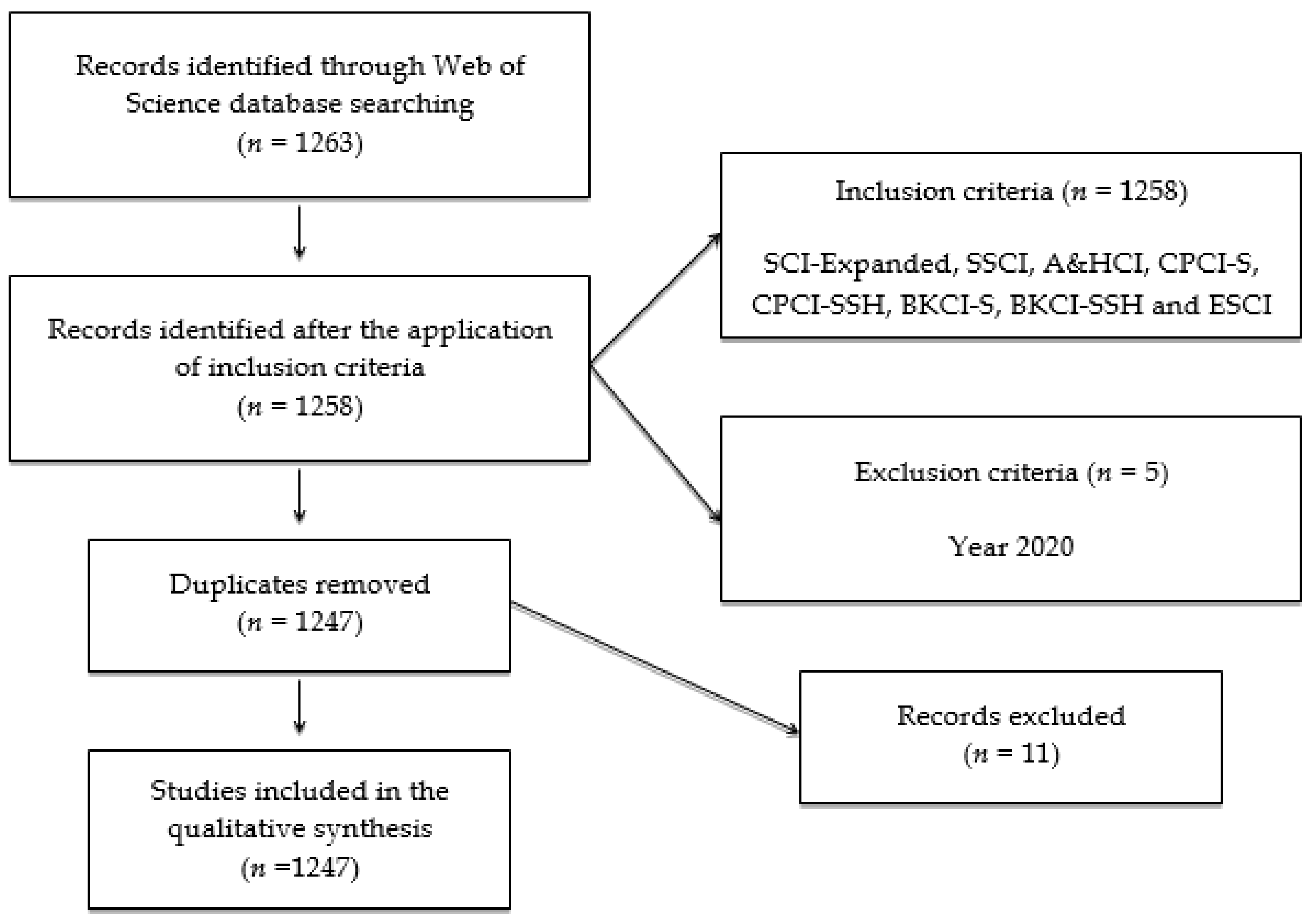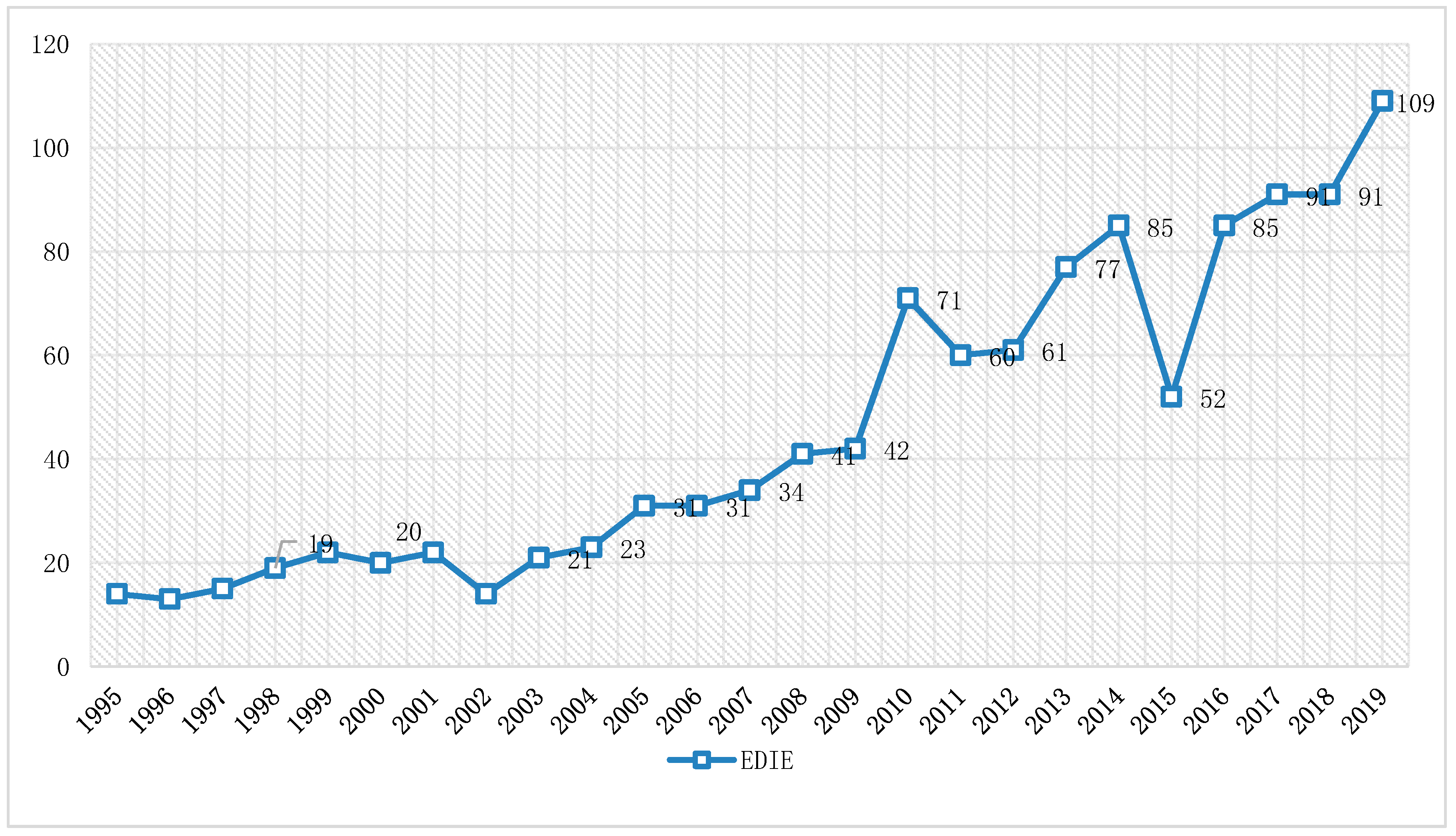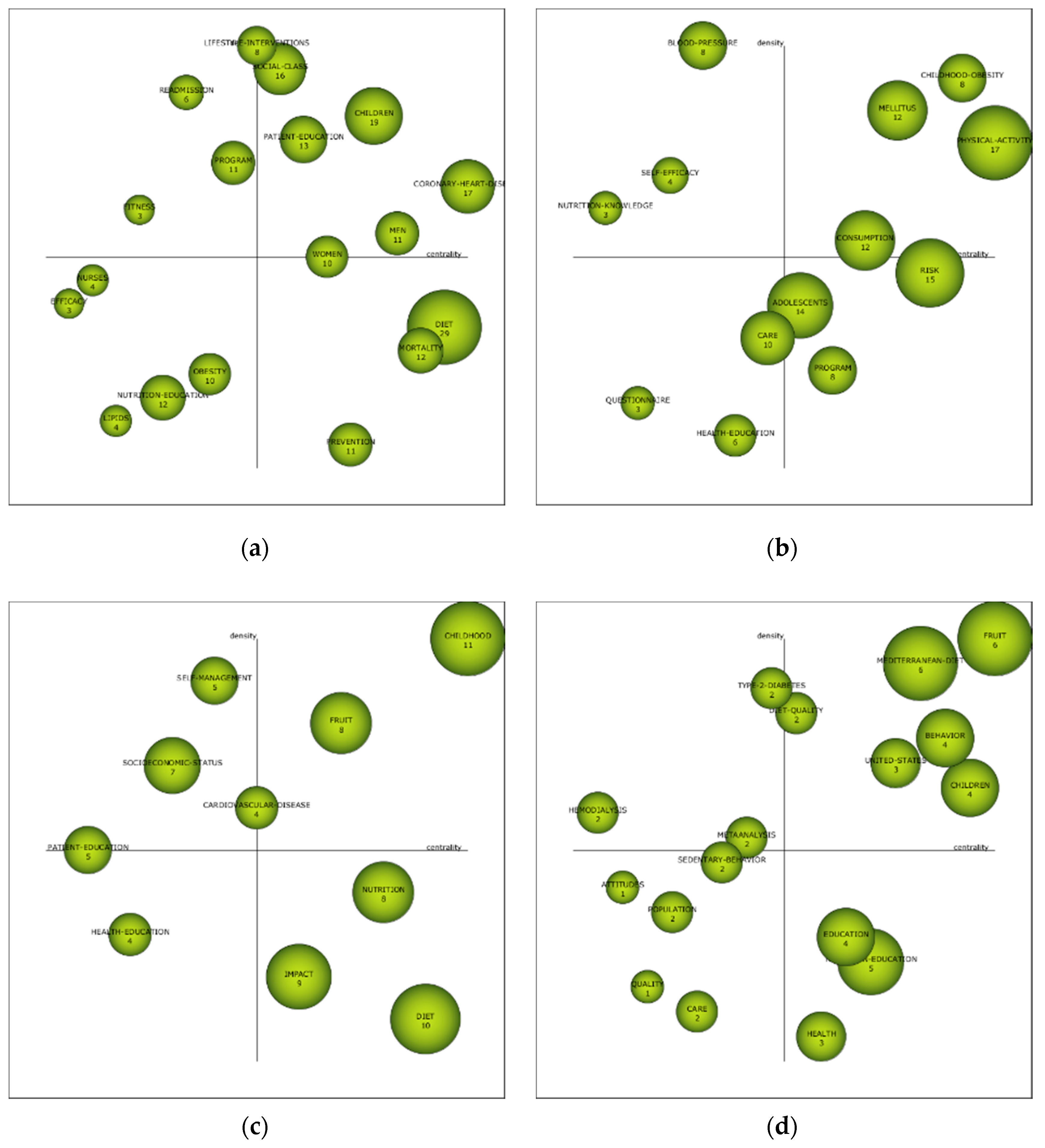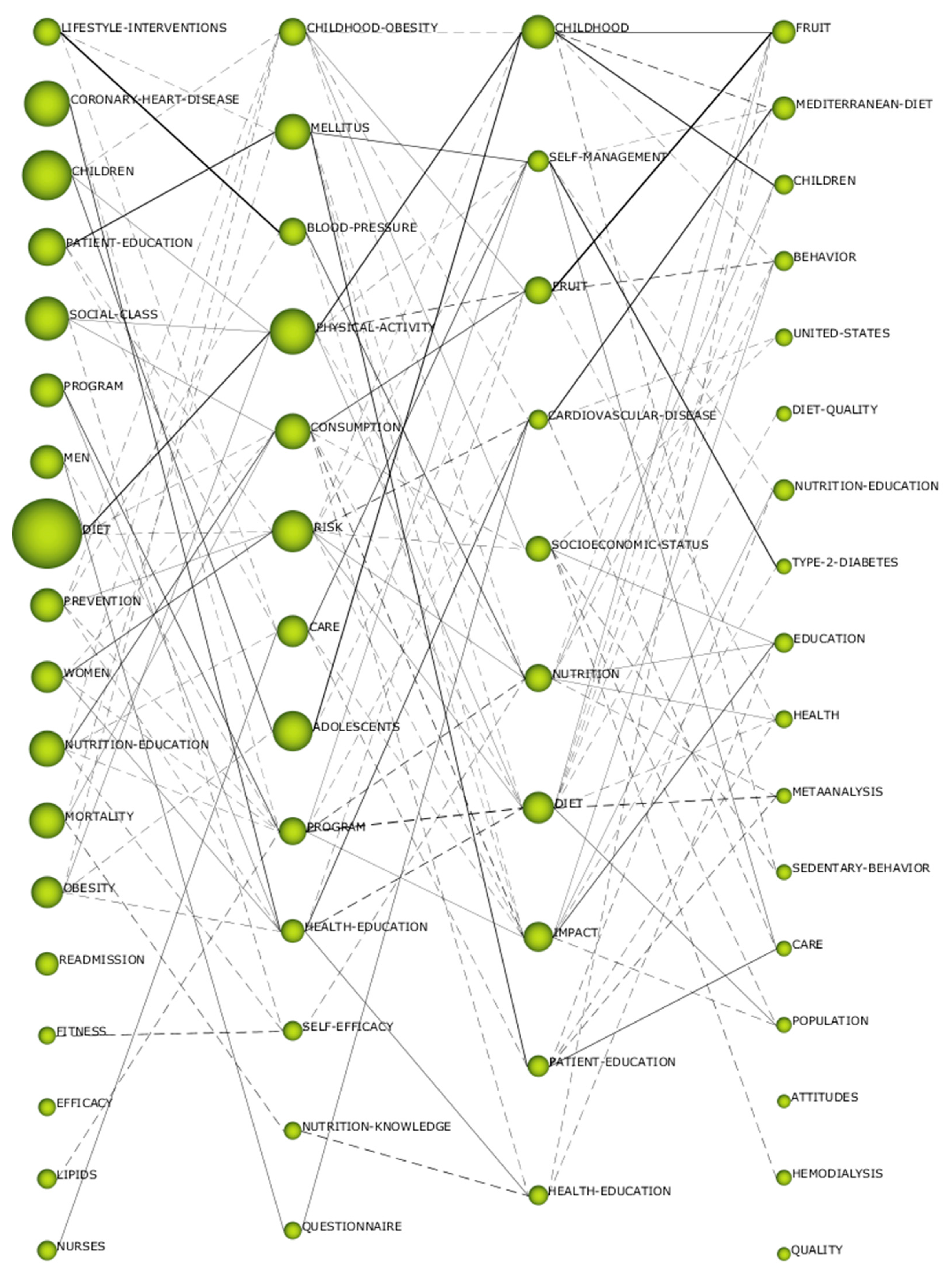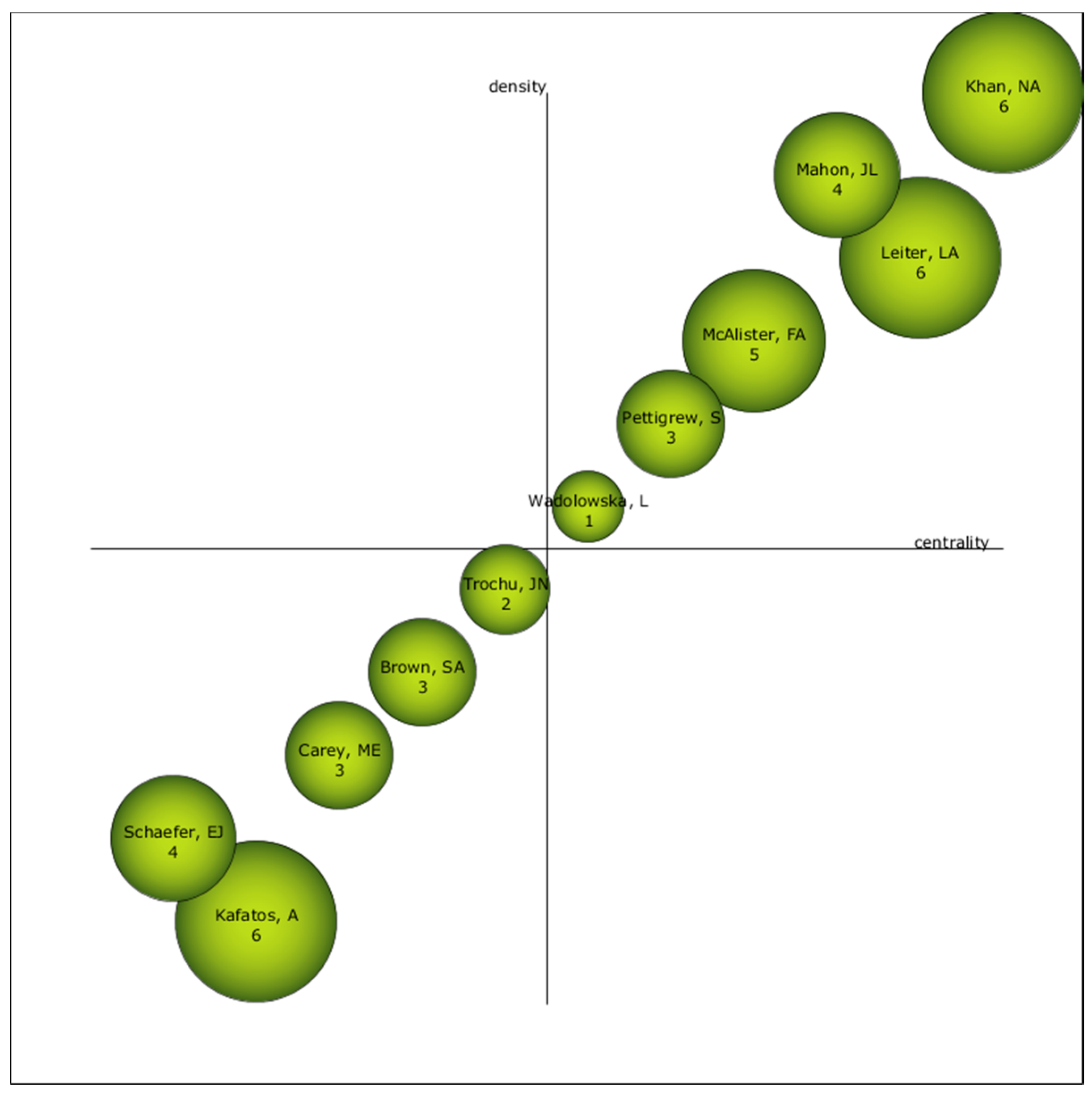1. Introduction
Nutrition assumes a fundamental role to protect and promote an optimal state of health. Therefore, the follow-up of a diet in schoolchildren is important, as they are classified as a sensitive group in nutritional terms, meaning that they are at greater risk of malnutrition or poor diet for effective growth and development [
1].
Diet is considered a key element for disease prevention, and thus, dietary recommendations from specialists should be followed in order to maintain and preserve a good state of health [
2].
The World Health Organization states that many young people around the world have high rates of both overweight and obesity. This is generated as a result of not performing enough physical activity, in addition to not following a healthy diet [
3]. Overweight and obesity are considered a serious public health problem, not only in developed countries, but also proliferating in developing countries [
4]. This situation is causing a high mortality rate closely linked to a poor-quality diet [
5].
In this sense, education plays a primary role in establishing good eating habits in people [
6]. Specifically, dietary education can promote the adequate behavior of adolescents in the face of their inadequate diet [
7]. In line with this, it has been observed that youths follow a diet with a high sugar content, which is detrimental to their health [
8].
It has been proven that a four-week-long nutritional education program can help to improve dietary and nutritional patterns in adolescents [
9]. Along these lines, other experts postulate that a diet education of only 20 min can cause a positive impact on young people’s knowledge about nutrition [
10].
These actions allow students to increase their knowledge about aspects related to nutrition and to change their attitude toward the intake of certain foods harmful to health [
11]. Also, the continuity of these programs over time results in the consolidation and durability of a healthy lifestyle [
12].
In primary education, it is important to apply training programs linked to the development of adequate dietary guidelines [
13]. This is justified in the constant transformations that the human body undergoes in the first years of life [
14] and in the personality development assumed by students at this stage [
15], with the purpose of establishing healthy habits at a nutritional level that have a special impact on diet and that last for a lifetime [
16]. The literature reflects the importance of carrying out training tasks in terms of nutrition and active lifestyles in order to raise awareness about good healthy habits and, thus, to prevent the proliferation of diseases at an early age [
17].
Experts recommend a quality nutritional education for the development of adequate eating habits, especially in diabetic people [
18] and those with heart problems or cardiovascular risk [
19], in order to ensure a good state of health.
Traditional practices to boost eating habits among people have shown little importance in improving dietary patterns [
20]. Therefore, nutritional training activities based on electronic resources such as mobile devices are increasing, proving to be effective for the implementation of a dietary follow-up [
21]. In addition, innovative dietary education programs are being carried out through educational technology based on e-learning to reduce the barriers that some people may have to access a nutritional training program [
22]. In addition, due to advances in technology, it is already possible to carry out dietary interventions using mobile applications [
23], as well as health education through emerging technologies such as augmented reality [
24].
Very few students and families have optimal knowledge regarding nutrition and dietetics, and those who do gained this knowledge from informal learning through self-study or through the recommendations of people they are close to in their environment [
25]. In a survey of pre-university students, a need for these adolescents to receive nutritional information by specialists was observed, since the training they had already received was by nonexperts in the field of nutrition and dietetics [
26]. A quality dietary education provided by qualified professionals can increase the indicators of obesity reduction and can facilitate the improvement of psychological factors [
27].
Not only is it important to educate and instill in students good dietary guidelines, but also teachers of educational centers and staff in charge of school canteens must receive specific training related to the development of adequate diets where the supply of food that provides energy, fats, and saturated fatty acids is controlled [
28].
The application of training programs related to active and healthy lifestyles, where the practice of physical activity is encouraged and the follow-up of a diet adjusted to the needs of each person, implies an improvement in biomedical parameters such as blood pressure, body mass index, fat reduction in body folds, and cholesterol [
29]. In addition, the follow-up of dietary guidelines has been proven to have a positive impact on students’ academic performance, obtaining better results than students with poor nutritional habits [
30].
Marketing campaigns are already being used to encourage families to contribute to improving the diet offered to children, as well as to combat a sedentary lifestyle that currently affects the younger population [
31]. Likewise, the demand for organic food is growing, but its consumption is not growing at the same rate, which is due to the value of the product [
32]. A diet based on organic farming should be promoted [
33]. However, all of this depends, to a large extent, on values of a social, emotional, and epistemic type that are related to the consumer’s intentions [
34].
Therefore, it is essential to follow dietary guidelines to promote an optimal state of health and to acquire all of the nutrients that the human body needs to function effectively in the different actions of daily life. In the same way, with correct feeding, the possibility of suffering diseases such as diabetes or hypertension is reduced. In this sense, schools assume an important role in both training and promoting healthy habits concerning food [
35].
All of the above serves to present the state-of-the-issue rationale drawn from recent studies in the impact literature. This has led to the completion of this study, due to the gap found in science as a consequence of the absence of research that reflects, from a bibliometric perspective in particular, the evolution and current state of dietetic education. Likewise, it was necessary to carry out this study because it deals with a very sensitive topic at present, and to reveal to the scientific community all of its scientific projection from the first studies until today.
5. Discussion and Conclusions
Food is one of the most influential factors in people’s health [
1,
2,
5]. Experts recommend following a correct diet by adhering to dietary guidelines established by professionals [
27]. In today’s society, nutrition and dietetics are assuming an important value [
32]. In addition to a sedentary lifestyle, obesity is affecting a large part of the population because they do not follow the appropriate nutritional recommendations for a proper diet [
3,
4]. As a consequence of this worrying situation, educational centers are carrying out initiatives and training programs to encourage the promotion of dietary education with the aim of improving students’ knowledge [
6,
7,
9,
10,
11] and to encourage an active and healthy life in order to reduce the possibility of suffering from certain diseases resulting from a poor diet [
17,
18,
19].
Unlike other studies related to the subject [
36], this paper investigated the dynamic and structural development of the concepts “diet” and “education” in order to reveal new findings on the state of the art, using a novel technique, namely, analysis of bibliometric indicators. The results obtained highlight that the previously established objectives in this study were achieved.
As for the scientific production reporting on “diet” and “education,” the results reveal that it experienced a turning point in 2009; prior to 2009, scientific documents dealing with both of these subjects were scarce and irregular, while from 2009 onward, the production grew, albeit irregularly, since in the years 2011–2012 and 2015, the production decreased.
The most common medium and language used by the scientific community to present their work is papers and English, respectively. The latter is related to the great interest that the United States has in this field of production. Within the area of research, Nutrition Dietetics, Public Environmental Occupational Health, the Journal of American Dietetic Association, Public Health Nutrition, and the Journal of Nutrition Education and Behavior are the most prominent. In terms of higher education, PCSHE, the University of California System, and the University of London are the most productive institutions regarding publications on “diet” and “education,” while the most prolific authors on the subject are Lichtenstein, Manios, and Schaefer, not coinciding with the most cited authors, given that Pi-Sunyer (1998) is the most cited author in this field of knowledge, with a total of 3802 citations.
The evolution of “diet” and “education” throughout scientific production maintains a consolidated research base, given that there is a high percentage of coincidence in the key words of the intervals established for this study, but this fact is not reflected in the topics dealt with in each of them, seeing as very few are repeated between the intervals. It can also be observed that scientific production has a before and after in 2014, given that in the intervals prior to this date, the most common key words refer to medical- and disease-related aspects, while from 2014, the themes are more focused on prevention and the type of diet.
In all of the intervals analyzed, there is no theme that is based on time as a driving force; on the contrary, there is a great variety between the established dates, which marks new fields and new visions for researchers when studying “diet” and “education.” It is in the last two intervals, since 2014, where a driving theme is glimpsed, which marks the trends of the investigations at that moment and not in the very near future as is the case for “fruit,” with studies focusing on diet, obesity, young people, and feeding in schools.
When considering the near future in this field of research, we must bear in mind the themes “attitudes,” “sedentary-behavior,” “population,” “quality,” and “care,” which, given their position in the 2017–2019 interval, may be the new trends and, therefore, will become the most relevant themes for the scientific community.
It can be concluded that the subjects of “diet” and “education” have been analyzed by the scientific community for more than 20 years. However, it is only in the last 10 years that these subjects have reached more relevance, focusing on aspects more related to disease prevention, primarily in terms of the type of feeding, with emphasis on fruit, which appears to be the main focus of investigators in this field of knowledge.
The aim of this research was to offer researchers new trends in the near future regarding the most relevant and interesting topics for the scientific community, as well as to highlight the aspects on which research has been based in recent times to provide a basis on which to start, develop, or guide their studies.
As a theoretical implication, this study provides specific information on the term diet in the educational field. That is, it analyzes the studies that refer to the actions developed in the educational field to train students on diet. In addition, it analyzes the diet programs applied in the different educational centers. From this perspective, the authors related to this subject are able to obtain concise information on the most prolific and current lines of research in this field of study.
As a practical implication, this study is useful for the educational community involved in the teaching of this subject to understand the most current trends, both at a pedagogical and at a didactic level. In addition, it helps to identify the most current topics and the most relevant and appropriate theoretical aspects to train students to develop an adequate diet.
There are several limitations presented in this research. The first relates to the purification of the data presented in WoS, where repeated documents are presented or are not related to the subject matter of the study. The second is related to the establishment of the intervals, which, in this case, is a question of equity, given that the researchers sought at all times to maintain a similar number of documents in each of the intervals. Thirdly, the parameters marked in this study were established according to the researchers’ own criteria, which sought to present the results in accordance with their size and relevance. Finally, another limitation of this study is found in the analysis of the h-index. Other experts in this type of research [
50] consider that it is not an objective indicator to establish the relevance or impact of researchers. For this reason, the data presented here should be viewed with caution, given that the change in the parameters established in this research may lead to a variation in the number of and the connections in the subjects presented. As future lines of research, we propose to develop practical applications and pedagogical actions in the educational field focused on diet. A study can also be performed on other databases, such as SCOPUS or Google Scholar, as well as an analytical analysis of the literature using more advanced techniques, as other studies suggest [
51].
